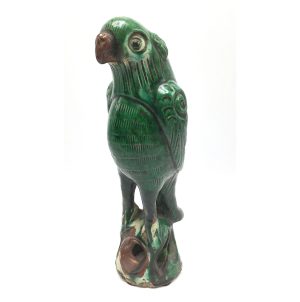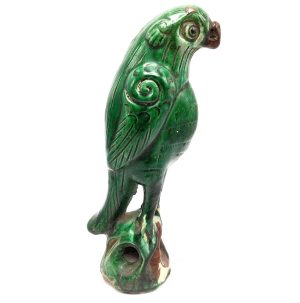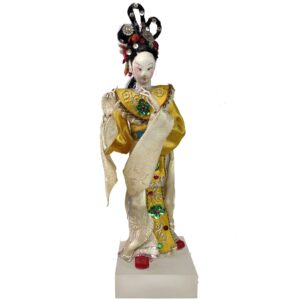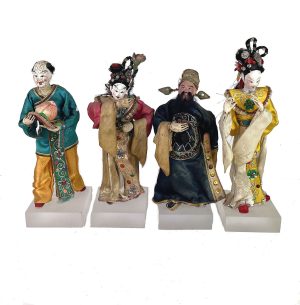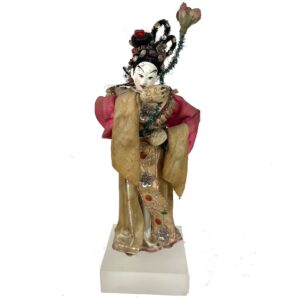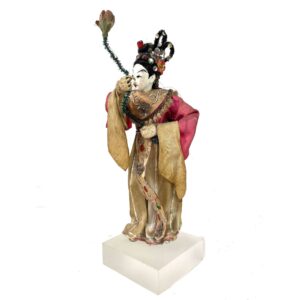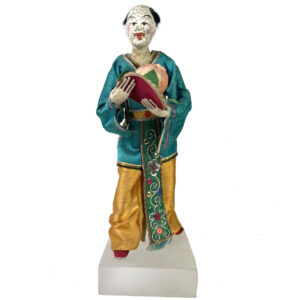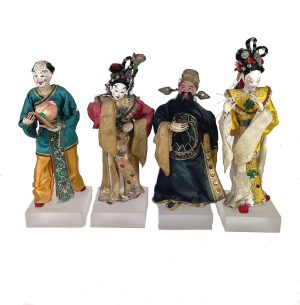Showing 25–28 of 28 results
-


$295.00
SOLD H: 9″ W: 3 ” D: 3.5 ” | FREE SHIPPING!
Chinese Republic ceramic parrots are commonly depiction as this one perched on an open rocky base. Porcelain parrots were produced for the domestic and export markets and sometimes sold in pairs leading some to believe they, like pairs of fish, symbolized the love and fidelity of married couples. This one has vivid polychrome colors, large eyes and stylized wings. This piece is in excellent condition.
-
Sale!


$195.00 Original price was: $195.00.$135.00Current price is: $135.00.
H: 10.5 ” W: 3.5 ” D: 3.125″ | FREE SHIPPING WITHIN CONTINENTAL U.S.
Charming Chinese Nuo Opera dancer wearing a costume with 5-petal plum blossoms symbolizing a wish for the Five Happinesses: prosperity, long life, health, a virtuous life and natural death.
-
Sale!


$195.00 Original price was: $195.00.$135.00Current price is: $135.00.
H: 8.75 ” W: 4 ” D:3.125 ” | FREE SHIPPING WITHIN CONTINENTAL U.S.
Chinese opera dancer doll with elaborate headdress and 5-petal plum blossom on sash symbolizing the Five Happinesses: prosperity, long life, health, living a virtuous life and dying a natural death.
-
Sale!


$195.00 Original price was: $195.00.$135.00Current price is: $135.00.
H: 9.25″ W: 3.125″ D: 3″ | Free SHipping within continental u.s.
Vivacious attendant doll offering huge peach in vibrant Chinese dance costume in red, yellow, green-blue with sequins, silver and gold thread and plum blossoms as wish for Five Happinesses. On Lucite stand, part of set of 4 .
End of content
End of content

